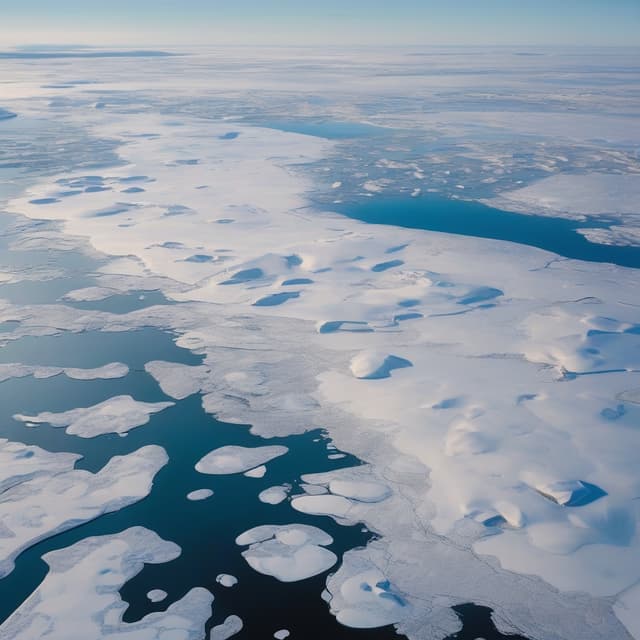
| Region | The Arctic |
| Geography | Northernmost region of the Earth, encompassing the Arctic Ocean and surrounding land masses |
| Conservation Efforts | Ongoing efforts to conserve the Arctic's delicate ecosystems |
| Dominant Populations | Indigenous populations living traditional subsistence lifestyles |
| Environmental Status | Minimal environmental degradation |
| Historical Development | Largely untouched by European colonization and modern economic activity |
| Current Geopolitical Significance | Source of geopolitical tension as various powers vie for control over its untapped natural resources and strategic location |
The Arctic is the northernmost region of the Earth, encompassing the Arctic Ocean, surrounding land masses, and the islands and archipelagos within. While the Arctic in our timeline has experienced extensive exploration, development and environmental damage over the past few centuries, in this alternate history it has remained relatively pristine and untouched.
Geographically, the Arctic is defined as the area north of the Arctic Circle, a line of latitude at approximately 66°34' N. This region includes the northern parts of Canada, Russia, Alaska, Greenland, Iceland, Norway, Sweden and Finland. The Arctic Ocean covers much of the central area, with a number of major seas such as the Barents Sea, Kara Sea, Laptev Sea and East Siberian Sea.
The Arctic climate is characterized by long, cold winters and short, cool summers. Temperatures can drop below −40 °C (−40 °F) in the winter months, while summer highs average around 10 °C (50 °F). Precipitation is low, with much of the region covered in permafrost, glaciers and sea ice. The region experiences constant sunlight during the summer months and perpetual darkness in the winter.
Instead of being sparsely populated, the Arctic in this timeline remains the homeland of various indigenous peoples, including the Inuit, Sami, Yupik, Chukchi, Nenets, and others. These groups have developed specialized cultures and economies adapted to the harsh Arctic environment, primarily based on subsistence hunting, fishing, and reindeer herding.
Many of these populations have been able to maintain their traditional ways of life, with little intrusion from the outside world. They continue to live in small, dispersed settlements and practice sustainable resource use. Indigenous knowledge and stewardship have helped preserve the Arctic's delicate ecosystems.
In contrast to the extensive exploration and colonization of the Arctic by European powers in our timeline, this version of the region has seen relatively little outside interference. Major Arctic expeditions, such as those led by Roald Amundsen, Robert Peary, and Richard Byrd, either never occurred or were turned back before reaching their goals.
As a result, large swaths of the Arctic remain unmapped and unexplored, with no permanent settlements beyond indigenous communities. Efforts to extract resources like oil, natural gas, minerals, and timber have been limited. The Northwest Passage and other Arctic sea routes have also seen minimal commercial activity and shipping traffic.
However, the Arctic's strategic location and untapped natural wealth have made it an emerging flashpoint for geopolitical conflict in recent decades. Various nations, including Russia, Canada, United States, Norway, and China, have begun staking claims and jockeying for influence in the region.
Competing territorial disputes, concerns over fishing rights, and the prospect of exploiting Arctic resources have raised tensions. There have been a number of military buildups, border skirmishes, and diplomatic standoffs as the major powers vie for control. Concerns over the environmental impact of potential development have also sparked international debates and conservation efforts.
Owing to the lack of large-scale human activity, the Arctic in this timeline has remained in a relatively pristine state. Its ecosystems, wildlife populations, and indigenous ways of life have been largely preserved. Climate change has also not impacted the region to the severe degree seen in our world, with the Arctic ice caps and glaciers still mostly intact.
However, the geopolitical competition over the Arctic has raised fears of future environmental degradation. Proposals for resource extraction, shipping routes, and other industrial projects threaten to disrupt the delicate Arctic balance. Ongoing conservation efforts aim to protect this unique and vulnerable region for generations to come.